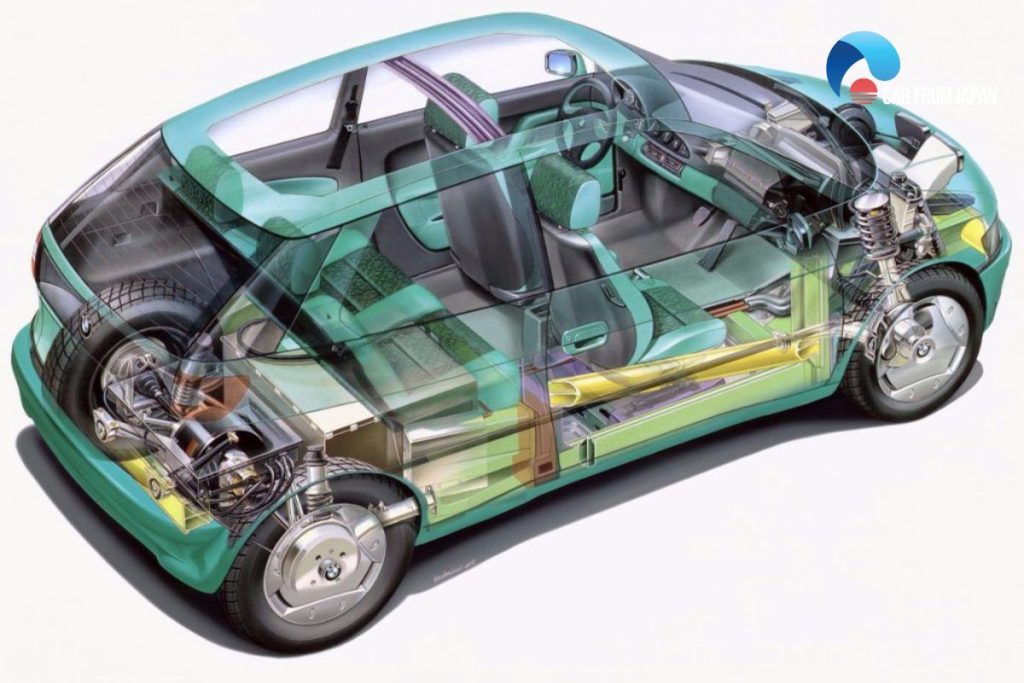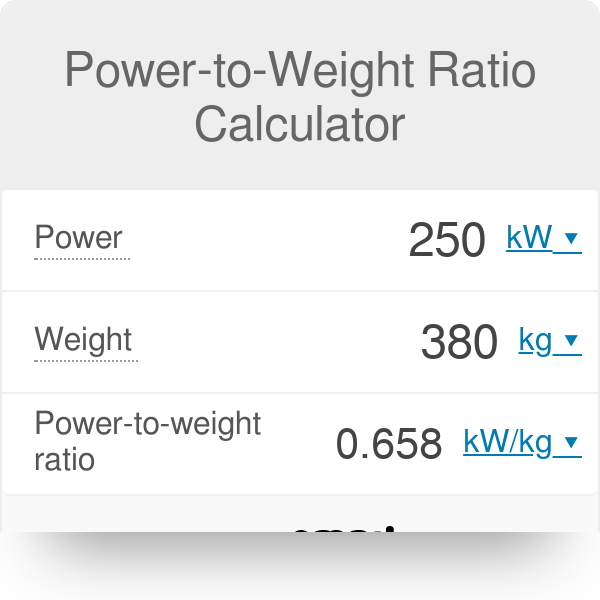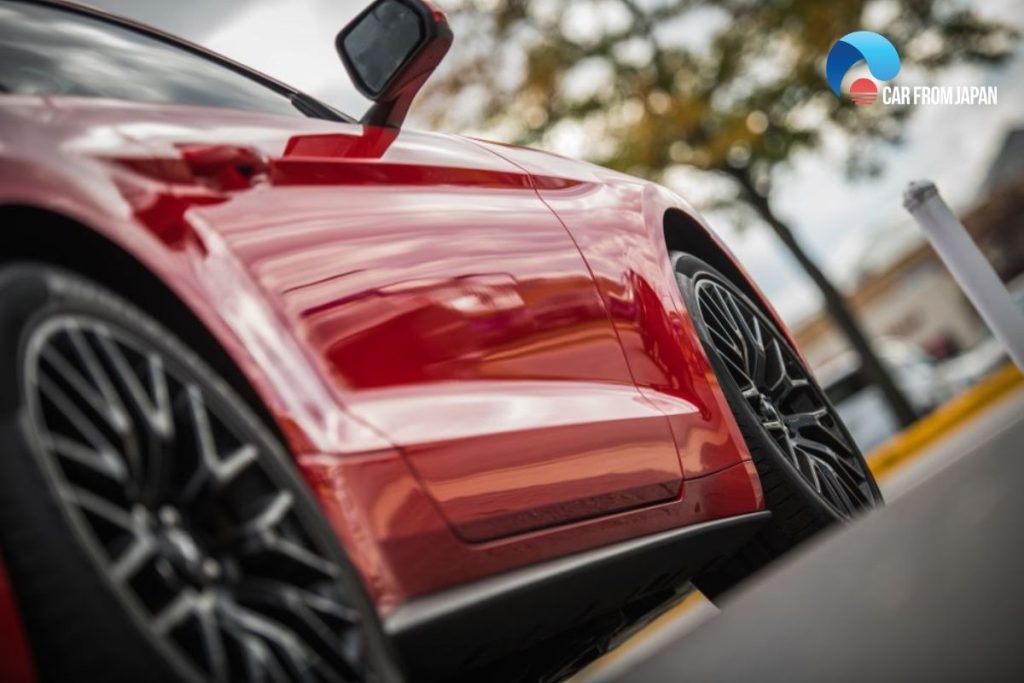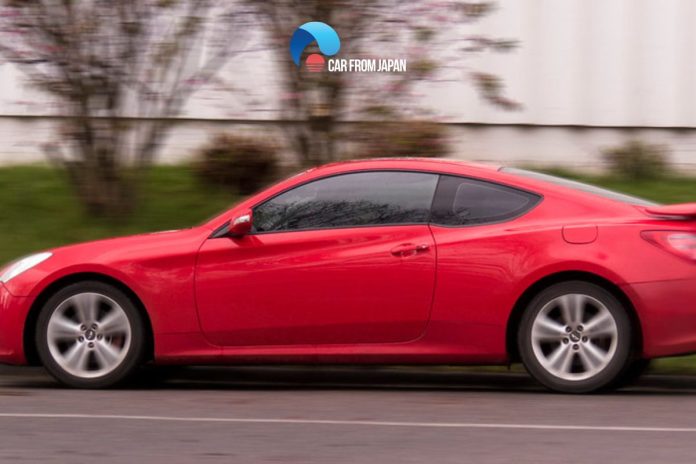The secret behind the peak performance of your vehicle is the power to weight ratio, this ratio is the thing most used to compare cars in terms of acceleration and many drivers assume that cars for the same sort of power to weight are going to accelerate at the same speed.
To know more about this value, let Car From Japan discuss what is the power to ratio and how to calculate this indicator in your car.
Contents
- What Is The Power To Weight In Automobiles?
- How To Calculate Power To Weight Ratio For Your Car?
- Is It Better To Have A Higher Power To Weight Ratio?
- FAQs on Power To Weight Ratio
- Does the power-to-weight ratio calculation change if I use horsepower vs. kilowatts?
- Why do some racers calculate power-to-weight using torque instead of horsepower?
- Should I calculate power-to-weight using curb weight, gross vehicle weight, or race weight?
- Why does power-to-weight ratio sometimes not match 0-60 mph times?
- Is it better to calculate power-to-weight per pound, per kilogram, or per ton?
- Do electric cars have an advantage in power to weight calculations?
What Is The Power To Weight In Automobiles?
We’re sure that most drivers have heard of this term but some people don’t really know what it’s about.
This metric measures the power that the car engine produces compared to the weight of your vehicle – usually expressed in units of kilogram or horsepower per pound.
When this value is high, it means better acceleration and performance of the car, and vice versa if the power-to-weight ratio is low, which means that your car has little power.
It’s a very important ratio that every driver should be looking at when buying a car because the power to ratio is a key factor in determining the performance of the car, of course, this ratio is considered to other factors like tire grips and aerodynamics.
However, you also should note that if the power increases it does not mean your car will go faster unless the weight of the car is lighter.
That’s the reason why all manufacturers always want to make their cars lighter as possible. By reducing the weight of your vehicle, the manufacturers can increase the performance and speed of the car.
So it means that the more power per pound, the higher the power to the weight indicator. And now you can also understand why trucks or lorries have higher weight and power but can’t defeat normal cars like SUVs or sedans.

So what is a good power to weight ratio? There is no exact answer to this question because this metric also depends on many factors of your car.
An excellent power-to ratio is a value that can minimize the impact of weight while meeting the car’s performance.
Typically, 20 lbs per HP is ideal for street cars while 10 lbs/HP is mild performance and 8 lbs will give the further best situation.
And now you may have the basic knowledge about the term “power to weight” in your car, we will move to the most looking forward of this topic.
Related Post: How To Increase Horsepower: 20+ Methods
How To Calculate Power To Weight Ratio For Your Car?
Power to weight ratio is a rough estimate of a vehicle’s ability to accelerate and a pretty good indication of how well a vehicle will do in a straight line.
Knowing this exact ratio helps us to accurately predict the speed at which a car is moving. Let’s go ahead and break it down a little bit farther and figure out how we can calculate it.
Formula: Power to weight ratio (PWR) = Power/weight
P: Car power (horsepower: more horsepower = more speed)
W: Car weight (pounds or lb)
We can take an example: Let’s take a theoretical car: A Dodge Viper has a weight of 3320 lbs and makes 450 horsepower so the power-to-ratio will be calculated as the following:
PWR = 450/3320= 0,135 hp for every pound of car.
So obviously, the higher this number is, the faster a car can accelerate. Because each horsepower has to move less weight out of its way.
If you want to increase the power-to-weight ratio, you have a couple of options you can consider: you can add more horsepower or reduce the total weight of the vehicle.
We think that you can get rid of a little bit of weight by taking stuff out.

This formula seems very simple but before applying this formula, there are some steps you need to do:
Step 1: You need to know the engine’s power output (Horsepower)
In case, you don’t know the average horsepower of a car, you can apply this formula to calculate this metric:
HP = (RPM x Torque of engine)/5252
So basically we need to find the engine speed and torque of the car. Both can be found in the car’s manual.
But if you don’t have the car’s manual, you can still find it by typing the car’s name and model into a search engine.
Step 2: Find the total weight of the vehicle
You can find the weight of the car by reading the manual or looking up the parameters from the manufacturer’s website, you should also note that the curb weight of the car is the weight of the car without luggage or passenger.
Read More: Curb Weight vs Gross Vehicle Weight: The Differences
Step 3: Apply the formula
Once you have the necessary number, you just need to change the parameters and apply some basic knowledge of math to find the final result.
Besides applying the formula you can use the power-to-weight ratio calculator and you can be easy to find this metric.
Is It Better To Have A Higher Power To Weight Ratio?
Overall, experts say a higher power-to-weight ratio is better for your car. It means that the vehicle will have more power compared to its weight, and at that time the vehicle will have better acceleration and overall performance.
However, there are other factors that can affect the speed and performance of the vehicle like the suspension design and the aerodynamics.
All these elements play an important role in the car’s performance. And when the power to weight in your car increases it also means that the fuel and emission will increase.
You also should note that the power-to-weight ratio is not yet an ultimate metric for speed comparisons between vehicles because it ignores torque, an important number when it comes to towing weight.
One example is that a diesel-powered SUV can overtake a gasoline-powered hatchback even though its power-to-weight ratio may be lower.
Although diesel engines have lower revs so their horsepower may not be as high as those of petrol engines, diesel produces more torque and can make up for this shortfall.

FAQs on Power To Weight Ratio
Does the power-to-weight ratio calculation change if I use horsepower vs. kilowatts?
Yes. The ratio depends on the unit of power. As long as you’re consistent (hp per kg or kW per ton), the comparison is valid.
Why do some racers calculate power-to-weight using torque instead of horsepower?
Because torque better reflects low-end acceleration and real-world drivability, especially in heavy vehicles or off-road setups.
Should I calculate power-to-weight using curb weight, gross vehicle weight, or race weight?
It depends on context. Curb weight is standard, but race tuners often use “with driver + fuel” (race weight) for accuracy.
Why does power-to-weight ratio sometimes not match 0-60 mph times?
Because traction, gearing, aerodynamics, and transmission type also play a huge role.
A lighter FWD car may still lose to a heavier AWD car despite the ratio.
Is it better to calculate power-to-weight per pound, per kilogram, or per ton?
All are valid. But enthusiasts often use hp per ton (imperial) or kW per kg (metric) for easier comparisons across cars globally.
Do electric cars have an advantage in power to weight calculations?
Often yes, since EVs deliver instant torque.
Even with higher weight, their usable power makes them feel quicker than the numbers suggest!
So here’re what we should know about the power to weight ratio. For more insightful Car maintenance tips, follow Car From Japan today!
